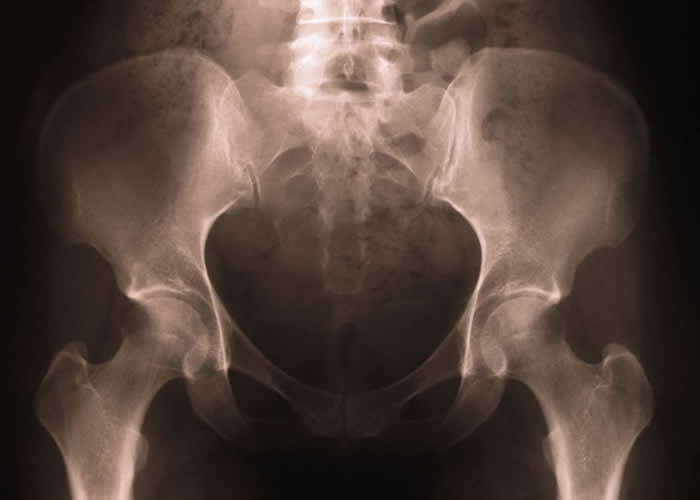October 2014
Hip Bursitis: The Most Common Hip Problem
by Nick A. Titley, M.S., NPI-Certified Posture Specialist
As an NPI Certified Posture Specialist, clients have expressed concern about developing hip pain. The most common hip related problem is hip bursitis. If you’re suffering from hip bursitis then moving around will be painful; you may require medication, rehab sessions, or surgery if symptoms become unbearable.
According to the American Academy of Orthopedic Surgeons (AAOS) website, bursae are small, jelly-like sacs that contain small amounts of liquid that are located throughout your body. They are positioned between bones and soft tissue and act like cushions to help reduce friction. Your shoulders, elbows, hips, knees and heels have bursae. When any of your bursae suffer from inflammation, it’s known as “Bursitis.”
The AAOS explains that there are two major bursae in the hip that typically become irritated and inflamed. One bursa covers the bony point of the hip bone called the greater trochanter. Inflammation of this area is called tronchanteric bursitis. The other bursa is located at the illopsoas (groin area) of the hip. Tronchanteric bursitis is seen more frequently, but both are treated in a similar manner. |

|
Every hip pain is not related to bursitis; the Mayo Clinic website offers some pointers on how you can identify symptoms of bursitis. If you currently have bursitis your hip joints may experience achiness and stiffness. It may look swollen and red, and may hurt when you move or press on it.
Mayo Clinic advises you see your physician when the joint pain is disabling, if it remains for more than one to two weeks and if there is excessive swelling, redness, bruising or a rash in the affected area. If you experience a fever and sharp, shooting pains especially while exercising, or exerting yourself then please see a physician,
Hip bursitis can affect anyone, but is more common in women and middle-aged or elderly people. The AAOS mentions factors that could lead to hip bursitis. If you have an overuse injury, pelvis alignment issues, a spine disease (including scoliosis and arthritis), leg-length inequality, a current hip injury, rheumatoid arthritis, previous surgery and calcium deposits then you may develop hip bursitis.
While all this information is overwhelming and can seem terrifying, treatment begins with trying to reduce the inflammation. The National Institute of Arthritis and Musculoskeletal and Skin Diseases (NIAMS) website, explains that you’ll need lots of rest, ice, compression and elevation if you’re experiencing basic symptoms. You may also require anti-inflammatory medicines, but if conditions worsen, or the bursa become infected then your physician may prescribe special antibiotics.
So how do you prevent hip bursitis? According to NIAMS, to help prevent inflammation, or reduce the likelihood of its occurrence, consider exercising regularly, stop sitting for long periods, strengthen the muscles around the joint and stop activities that might be causing you pain. Consider using a stand-up desk if your job requires long days using a computer. If you have a physically demanding job that requires heavy lifting and repetitive motions you’ll need to take breaks, and practice good posture and body alignment.
It’s all about behavior and lifestyle modification. The National Posture Institute’s (NPI) certified professionals can educate you on those lifestyle modifications and design exercise programs that center around making things easier. A professional will assess your posture while you engage in different activities and will make you aware if you’re harming yourself. It may be as simple as adjusting the way you walk — especially for those who shuffle their feet — and you may need to opt for shoes with better cushioning. If you’ve already started exercising after a hip related issue then consult an NPI professional to ensure your posture and body alignment aren’t safe.
Hip bursitis is the most common hip related problem and can seem scary. Your best move is to modify the way you perform activities, add cushioning where possible, and perform exercises in the correct position for your hip as part of your regular daily routine. Hip bursitis can get worse so please see a physician if you’re worried about any pain or show symptoms.
References:
- "Hip Bursitis." Ortho Info. American Academy of Orthopedic Surgeons, 1 Mar. 2014. Web. 27 Sept. 2014. <orthoinfo.aaos.org/topic.cfm?topic=a00409>.
- "Bursitis." Mayo Clinic. Mayo Clinic, 20 Aug. 2014. Web. 27 Sept. 2014. <mayoclinic.org/diseases-conditions/bursitis/basics/definition/con-20015102>.
- "Bursitis and Tendinitis." National Institute of Arthritis and Musculoskeletal and Skin Diseases. National Institutes of Health, 1 June 2014. Web. 27 Sept. 2014. <niams.nih.gov/Health_Info/Bursitis/>.
|
